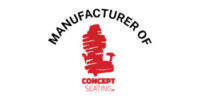
The world of industrial manufacturing, particularly in the production of medical devices, employs various sophisticated sewing techniques to ensure product reliability, durability, and safety. Products in the healthcare industry must feature precise and often specialized stitches that meet stringent standards.
Each stitch type serves a purpose, tackling various challenges posed by different medical applications, whether that involves preventing irritation or ensuring the strength and integrity of a life-saving device. Learning about the most common sewing stitches used in industrial manufacturing is crucial for anyone involved in the design, production, or use of medical textiles.
Straight Stitch
The straight stitch is the most fundamental and widely used in industrial sewing. This stitch creates a simple, uniform line of stitches, ensuring strong seams and edges. It’s used extensively in the construction of medical soft goods. The straight can be single, double, or multi-needle. It offers the advantage of being robust and adaptable, making it indispensable where precision and reliability are crucial.
Zigzag Stitch
The flexibility and strength of the zigzag stitch make it ideal for applications requiring elasticity, such as in the creation of bandages and pressure garments. A zigzag stitch covers more surface area than a straight stitch, providing added reinforcement and holding the fabric edges together securely. This is essential for preventing fraying and malfunctions in medical textiles.
Overlock Stitch
Overlock stitches are essential for finishing raw edges to prevent them from unraveling. This stitch wraps around the edge of the fabric, securing it with multiple threads. In the production of items like surgical drapes, patient gowns, and other disposable medical products, the overlock stitch provides the needed durability and prevents the material from shedding fibers. This is crucial in an environment where everything must remain controlled and sterile.
Blind Stitch
One of the most popular sewing stitches used in industrial manufacturing is the blind stitch because the hem becomes invisible or barely noticeable. This stitch is popular in the production of uniforms and garments that require a clean, professional appearance without compromising the integrity and strength of the hem. The blind stitch keeps the fabric layers in place without creating a visible seam, maintaining both function and aesthetics.
Chain Stitch
Chain stitches are incredibly strong and are primarily used in applications where the sewn seam must endure substantial stress. Products that require washable, reusable materials often employ chain stitches. This stitch creates a looped chain pattern that is less likely to unravel compared to other stitches, ensuring long-lasting seam integrity.
Each stitch offers unique properties that contribute to the overall efficacy and safety of the final product. Seam strength, durability, and precision are fundamental requirements in textile production, and understanding the function of different stitches helps achieve these standards. Each stitch type requires a different type of industrial sewing machine, so it is important you select a sewing manufacturer who has invested (and keeps investing) in a variety equipment types. The knowledge and expertise of a reliable sewing manufacturer are crucial to producing medical textiles that meet the demanding requirements of various applications.











